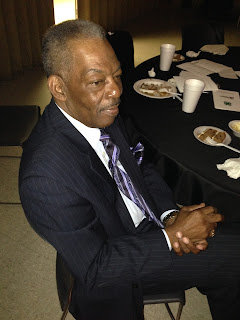The British History of Engineering
In 1945, under the encouragement of a native New Bern resident Tyron Palace became the first of the state historical locations that would be state sponsored. More than 50 homes and a major highway would have to be moved to recreate the location on it's original site. After digging the cellar of the original palace was located and the structure was rebuilt (thanks to the original architectural drawings) on the original foundation.
To this day volunteers, dressed in period costume, offer tours of the home, stables, and kitchen and do their best to offer a slice of life from that time period. It was a little difficult to understand that this was more about British life rather than American life. However through the stories it became very apparent why the British reign didn't last long.The gardens are created in several sections. There is a raised bed garden, a boxwood maze garden with fountain (that was added after the rebuilding-fountains weren't prevalent in the 1770's). Native plants are planted along a long lawn that would have been a host for games and lawn parties. Then there is a food and pollinator garden right outside the kitchen where they could pick fresh fruits and vegetables from the garden to prepare for meals. The kitchen also had a smoke house to preserve meats that could be served for various meals. The kitchen had also sorts of tools that showed the ingenuity of their engineering prowess. For example there is a swing arm in the cooking fire place that would allow for multiple pots to be suspended at different heights for proper cooking. One of the things our 4-H members noticed was a lack of air conditioning. They couldn't imagine how a crew of cooks could be inside, working over a fire, to cook meals on a hot day. After touring all the buildings and gardens on the original site we headed back to the welcome center. There we learned about the mechanics of city clocks, and we got a better historical timeline for the palace. Unfortunately due to COVID the hands on history center was closed to the public, but it is something to think about for the future.We would also like to thank the Cow Cafe for lunch and some amazing ice cream. We have been fortunate to explore some really neat local restaurants on our trips and learn about the history and the local specialties of the places we visited.
To see all the fun we had today please check out our photos at this link. Stay tuned as we examine more amazing scientific discoveries and try not to blow things up.







.jpg)

Comments